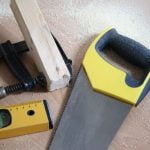Are you considering a home improvement project but not sure how to finance it? In this article, we will explore the fundamentals of a mortgage home improvement loan and how it can help you achieve your renovation goals. You may be wondering, “how does a mortgage home improvement loan work?” Let’s delve into the details to gain a better understanding of this financing option.
A mortgage home improvement loan is a type of secured loan that allows homeowners to borrow funds using their property as collateral. This type of loan can be used to finance various renovation projects, such as kitchen remodels, bathroom upgrades, or even adding an extension to the house. By leveraging the equity in your home, you can access the necessary funds to transform your living space according to your preferences.
When considering a mortgage home improvement loan, it’s essential to understand its benefits and eligibility requirements. In the following sections, we will discuss the advantages of using this type of loan and what criteria you need to meet in order to qualify for it.
Additionally, we will provide insights into the application process and different types of mortgage home improvement loans available in the market. By the end of this article, you will have a comprehensive understanding of how this financing option works and be able to make an informed decision when planning your next home improvement project.
Exploring the Benefits of Using a Mortgage Home Improvement Loan
When it comes to financing home improvement projects, a mortgage home improvement loan can offer several benefits. One of the key advantages is that this type of loan typically allows homeowners to borrow a large amount of money, often at a lower interest rate compared to other types of loans. This can make it easier to fund major renovation or remodeling projects without breaking the bank.
Another benefit of using a mortgage home improvement loan is that the interest may be tax-deductible, which can result in significant savings for homeowners. Additionally, spreading out the payments over a longer term can make it more manageable for homeowners to budget for their home improvement projects without feeling financially strained.
Furthermore, by using a mortgage home improvement loan, homeowners may be able to increase the value of their property. Investing in high-quality renovations or upgrades can lead to a higher resale value for the home, making it a sound financial decision in the long run.
| Benefits | Description |
|---|---|
| Larger borrowing amount | Mortgage home improvement loans allow borrowers to access larger amounts of money for their renovation projects. |
| Tax-deductible interest | Interest paid on the loan may be tax-deductible, providing potential savings for homeowners. |
| Increased property value | Investing in quality renovations can raise the resale value of the property over time. |
Eligibility Requirements for a Mortgage Home Improvement Loan
When considering a mortgage home improvement loan, it’s important to understand the eligibility requirements that lenders typically look for. The eligibility criteria may vary depending on the lender and the type of loan you are applying for, but there are some common requirements that most lenders will consider.
Credit Score
One of the most important factors that lenders consider when evaluating your eligibility for a mortgage home improvement loan is your credit score. A higher credit score demonstrates to lenders that you have a history of responsible borrowing and are more likely to repay the loan on time. While specific credit score requirements may vary, having a good to excellent credit score will increase your chances of qualifying for a favorable loan.
Income and Employment
Lenders will also assess your income and employment status to determine whether you have the financial means to repay the loan. They may require proof of stable employment and sufficient income to cover your existing expenses as well as the additional loan payments. Lenders typically use a debt-to-income ratio to evaluate your ability to manage additional debt, so it’s important to have a steady source of income.
Home Equity
Another key factor in determining eligibility for a mortgage home improvement loan is the amount of equity you have in your home. Home equity is the difference between the current market value of your home and the outstanding balance on your mortgage. Lenders often require borrowers to have a certain amount of equity in their homes before approving a home improvement loan. This equity serves as collateral for the loan and reduces the lender’s risk.
By understanding these eligibility requirements, you can better assess whether you are likely to qualify for a mortgage home improvement loan and take steps to improve your eligibility if necessary.
The Application Process for a Mortgage Home Improvement Loan
When it comes to getting a mortgage home improvement loan, the application process can seem overwhelming. However, with the right knowledge and preparation, you can navigate the process with confidence. Here’s what you need to know about applying for a mortgage home improvement loan.
Gather Your Financial Documents
Before applying for a mortgage home improvement loan, it’s important to gather all the necessary financial documents. This may include proof of income, tax returns, bank statements, and documentation of any existing debts. Lenders will use this information to assess your financial situation and determine your eligibility for a loan.
Submit Your Loan Application
Once you have all your financial documents in order, you can begin the loan application process. This typically involves filling out an application form provided by the lender. The application will ask for details about your income, assets, employment history, and the specific improvements you intend to make to your home.
Undergo the Underwriting Process
After submitting your loan application, the lender will initiate the underwriting process. During this stage, they will review all of your financial information and assess the risk of lending to you. They may also conduct a credit check and appraise your property to determine its current value. This step is crucial in determining whether or not you are approved for a mortgage home improvement loan.
Understanding the application process for a mortgage home improvement loan is an important step in securing financing for your home improvement project. By taking the time to gather your financial documents, submit a thorough application, and undergo the underwriting process with patience and diligence, you can increase your chances of securing the funds you need for your project.
Understanding the Different Types of Mortgage Home Improvement Loans
When considering a mortgage home improvement loan, it’s important to understand the different types of loans available. Each type of loan has its own benefits and potential drawbacks, so it’s essential to choose the right option for your specific needs. Here are some of the most common types of mortgage home improvement loans:
1. Home Equity Loan: A home equity loan allows homeowners to borrow money using the equity in their home as collateral. This type of loan typically has a fixed interest rate and a set repayment term, making it a predictable option for borrowers.
2. Home Equity Line of Credit (HELOC): Similar to a home equity loan, a HELOC also allows homeowners to borrow against the equity in their home. However, a HELOC functions more like a credit card, with a revolving line of credit that can be used as needed. Borrowers only pay interest on the amount they use from the credit line.
3. Cash-Out Refinance: With a cash-out refinance, homeowners can refinance their existing mortgage for more than they currently owe and receive the difference in cash. This can be an attractive option for those looking to take advantage of lower interest rates or who have built up significant equity in their home.
Each type of mortgage home improvement loan works differently and offers unique advantages. It’s essential to evaluate your financial situation and project needs carefully before deciding on the best option for you.
Whether you choose a home equity loan, HELOC, or cash-out refinance, understanding how each type of mortgage home improvement loan works is crucial to making an informed decision about financing your renovation project. Consulting with a knowledgeable lender can also provide valuable guidance on selecting the right loan for your specific circumstances.
With careful consideration and expert advice, homeowners can make informed decisions when choosing among these different types of mortgage home improvement loans to fund their renovation projects effectively.
How Does the Approval Process Work for a Mortgage Home Improvement Loan
When it comes to the approval process for a mortgage home improvement loan, there are several key factors that lenders will consider before granting the loan. One of the most important factors is the borrower’s credit score and financial history. Lenders will typically look for a credit score of 620 or higher, as well as a strong history of on-time bill payments and responsible use of credit.
In addition to credit score, lenders will also evaluate the borrower’s income and employment status. They want to ensure that the borrower has a stable source of income and is capable of repaying the loan. Lenders may require proof of income in the form of pay stubs, tax returns, or bank statements.
Another important aspect of the approval process is the loan-to-value (LTV) ratio. This ratio represents the amount of the loan compared to the appraised value of the property. A lower LTV ratio is more favorable, as it indicates less risk for the lender. Most lenders prefer an LTV ratio of 80% or lower when approving mortgage home improvement loans.
Ultimately, the approval process for a mortgage home improvement loan involves a thorough evaluation of the borrower’s financial situation, credit history, and the value of their property. It’s essential for borrowers to have all necessary documentation in place and to maintain open communication with their lender throughout the application process.
| Factors Considered | Requirements |
|---|---|
| Credit Score & Financial History | Credit score of 620 or higher; Responsible credit use |
| Income & Employment Status | Stable source of income; Proof of income required |
| Loan-to-Value Ratio (LTV) | Lender prefers LTV ratio of 80% or lower |
Exploring Interest Rates and Repayment Options for Mortgage Home Improvement Loans
When considering a mortgage home improvement loan, it is crucial to explore the interest rates and repayment options available. Interest rates for these types of loans can vary depending on the lender, the borrower’s credit score, and the loan amount.
Typically, mortgage home improvement loans have lower interest rates compared to other types of loans, such as personal loans or credit cards. This is because these loans are secured by the value of the home, making them less risky for lenders.
Repayment options for mortgage home improvement loans also differ from traditional personal loans. Borrowers have the option to choose between fixed-rate and adjustable-rate mortgages. Fixed-rate mortgages offer a stable monthly payment over the life of the loan, making budgeting easier for homeowners. On the other hand, adjustable-rate mortgages may start with lower interest rates but can fluctuate over time based on market conditions.
It’s essential for borrowers to carefully consider their financial situation and future plans when selecting a repayment option for their mortgage home improvement loan. Working closely with a lender to understand the terms and conditions of each option can help homeowners make an informed decision that aligns with their long-term financial goals. By exploring interest rates and repayment options thoroughly, borrowers can make confident choices that support their home improvement projects without causing unnecessary financial strain.
Tips for Choosing the Right Lender for a Mortgage Home Improvement Loan
When considering a mortgage home improvement loan, choosing the right lender is crucial to ensure that you get the best terms and rates for your specific needs. With many financial institutions and lenders offering these types of loans, it’s important to do your research and consider a few key factors before making a decision.
One of the first things to consider when choosing a lender for a mortgage home improvement loan is their reputation and credibility. Look for lenders with a strong track record in providing these types of loans, as well as positive reviews and feedback from previous clients. You can also check with industry organizations and regulatory bodies to ensure that the lender is licensed and in good standing.
Another important factor to consider is the terms and conditions of the loan offered by different lenders. This includes the interest rates, repayment options, fees, and any other associated costs. Compare these factors from multiple lenders to determine which one offers the most favorable terms for your specific financial situation.
Additionally, it’s essential to assess the level of customer service provided by each lender. A responsive and supportive lender can make a significant difference in your overall experience when obtaining a mortgage home improvement loan. Consider reaching out to potential lenders with any questions or concerns you may have to gauge their level of service and communication.
By thoroughly evaluating these factors, you can make an informed decision when choosing the right lender for your mortgage home improvement loan. Doing so will ensure that you secure the best possible financing for your home renovation project while setting yourself up for success in achieving your desired improvements.
Case Studies
Many homeowners have successfully used mortgage home improvement loans to finance various renovation or remodeling projects. One example is the Smith family, who used a home equity loan to fund a complete kitchen remodel.
By tapping into the equity in their home, they were able to access a larger sum of money at a lower interest rate compared to traditional personal loans. This allowed them to update their kitchen with high-end appliances, custom cabinetry, and luxurious countertops without draining their savings.
Another success story is the Johnsons, who utilized a cash-out refinance to add an additional bedroom and bathroom to their home. They were able to secure a lower interest rate on their new mortgage while also accessing the funds needed for the expansion project. As a result, they not only increased the value of their property but also enhanced their day-to-day living space and comfort.
In both cases, these homeowners worked with reputable lenders who guided them through the loan process, from application to approval and disbursement of funds. Understanding the different types of mortgage home improvement loans available and choosing the right one for their specific needs ultimately allowed them to achieve their desired home improvement goals while managing costs effectively.
These case studies exemplify how a mortgage home improvement loan can be an advantageous financial tool for homeowners looking to enhance their properties while preserving their financial stability.
Conclusion
In conclusion, when considering a mortgage home improvement loan, it is essential to have a good understanding of how this type of loan works and what benefits it can provide. By exploring the eligibility requirements, application process, approval process, interest rates, and repayment options, homeowners can make informed decisions about using a mortgage home improvement loan to fund their renovation projects.
It is important to choose the right lender by doing thorough research and comparing options to ensure favorable terms and conditions.
One of the key benefits of a mortgage home improvement loan is that it allows homeowners to finance their renovation projects without having to use their savings or high-interest credit cards. This type of loan provides a lump sum upfront, making it easier for homeowners to budget for their home improvements. Additionally, with the potential for tax-deductible interest payments, a mortgage home improvement loan offers financial advantages that may not be available with other types of financing.
When exploring different types of mortgage home improvement loans, homeowners should consider factors such as interest rates, repayment terms, and whether they are looking for a fixed-rate or adjustable-rate loan. By assessing their specific needs and financial situation, homeowners can choose the option that best suits their requirements. Ultimately, with careful consideration and proper planning, a mortgage home improvement loan can be an effective way to enhance the value and comfort of a home.
Frequently Asked Questions
Is It Hard to Get Approved for a Home Improvement Loan?
Getting approved for a home improvement loan can be challenging, as lenders typically require a good credit score and a low debt-to-income ratio. Additionally, the value of your home and the amount of equity you have will also play a role in the approval process.
What Is the Difference Between a Home Loan and a Home Improvement Loan?
The main difference between a home loan and a home improvement loan is that a home loan is used to purchase or refinance a home, while a home improvement loan is specifically for renovations, repairs, or additions to an existing home. Home improvement loans often have higher interest rates than traditional home loans.
How to Use Mortgage for Home Improvements?
Using a mortgage for home improvements involves either refinancing your existing mortgage to borrow additional funds for renovations or taking out a home equity loan or line of credit. This allows homeowners to leverage the equity in their homes to finance projects such as kitchen remodels, bathroom upgrades, or new room additions.
However, it’s important to carefully consider the financial implications of using a mortgage for home improvements before making any decisions.

I’m thrilled to have you here as a part of the Remodeling Top community. This is where my journey as an architect and remodeling enthusiast intersects with your passion for transforming houses into dream homes.





